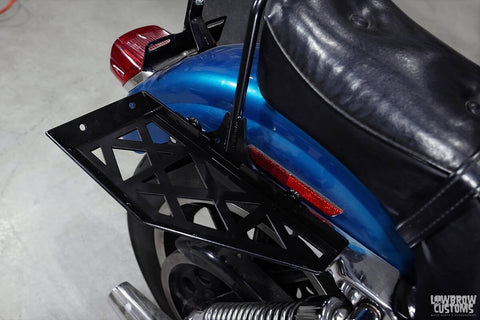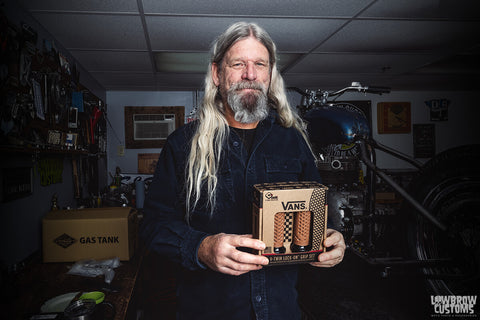TABLE OF CONTENTS
I didn’t start riding until I was 24 and have amassed about 150,00 road riding miles in 15 years, and I can tell you with certainty that motorcycling is unlike anything you’ve done before. The 10 tips serve as a guide to buying a first motorcycle for each step of the process – figuring out what makes for a good first bike (and what you need to avoid), how to best handle checking out a potential first bike and how to figure out if your first motorcycle is a keeper.
 Yamaha Bolt can be a really inexpensive and nice first bike
Yamaha Bolt can be a really inexpensive and nice first bike
 Some Harley's are a big comfy couch with two wheels.
Some Harley's are a big comfy couch with two wheels.
This guide to buying your first motorcycle doesn’t guarantee everything will work out with your first bike – but it will help you avoid some of the common problems that can make a new rider’s first months or years of riding more challenging than they need to be.
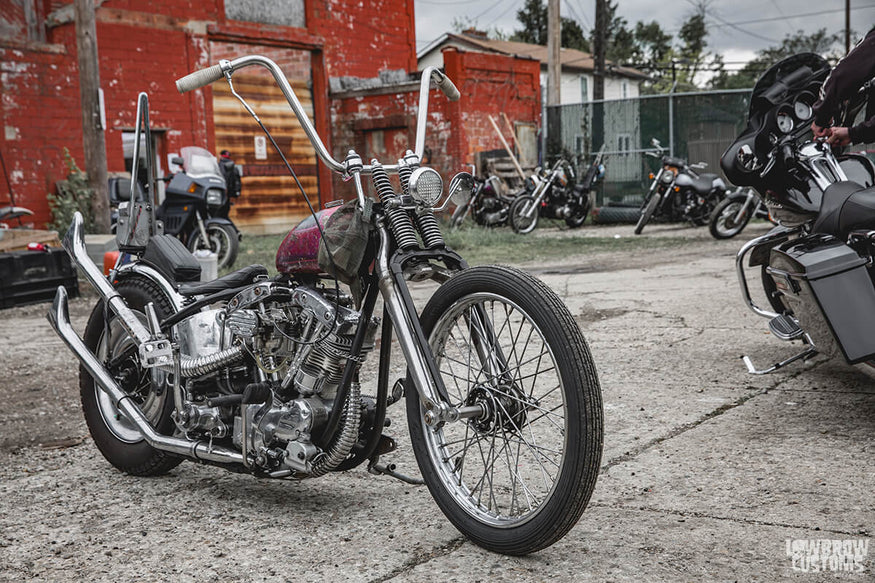 Some people's dream bike is a slabside shovel chopper with a springer front end. Trey Guidery's is to drool over, but it doesn't mean its an ideal candidate for your very first bike.
Some people's dream bike is a slabside shovel chopper with a springer front end. Trey Guidery's is to drool over, but it doesn't mean its an ideal candidate for your very first bike.
1. It Is Not Necessary To Start Off With Your Dream Bike
Of all the tips for buying a first motorcycle, I can’t stress this one enough. Yes, that gorgeous Suzuki Hayabusa or Indian Challenger you saw on Facebook may look great, but you don’t need to have your dream bike to start riding.
 Brand new Harley in the dirt... No bueno!
Brand new Harley in the dirt... No bueno!
One of the most common critiques of new riders who want to find the perfect bike for their first motorcycle is how often newbies drop their bike. Most every motorcycle rider has had their bike tip over on them – a lot of times while they’re sitting on it in a parking lot or in slow traffic. Often, this happens in the first year or two of riding. I’ve heard experienced riders ask newbies, “Do you really want to be heartbroken when you scratch up the paint or chrome on your dream bike because of a rookie mistake?”
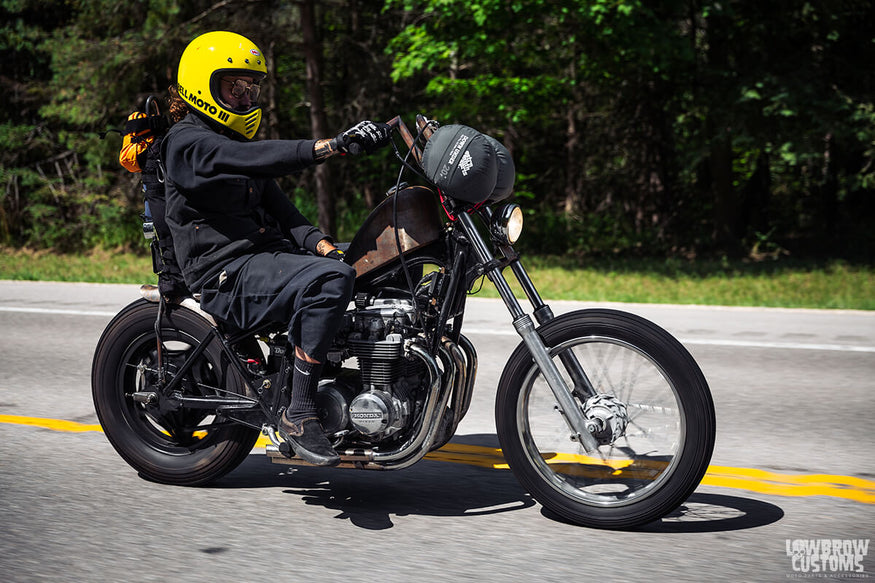 This dude is having a blast on a relatively inexpensive slightly modified Honda, Style for miles and most likely he didn't break the bank.
This dude is having a blast on a relatively inexpensive slightly modified Honda, Style for miles and most likely he didn't break the bank.
For me, the more important issue for this tip on buying your first motorcycle is attitude. If you’re more worried about how your bike looks or how fast it can go than how comfortable you feel on it and what kind of mechanical shape it’s in, you need to reevaluate why you want to get into riding.
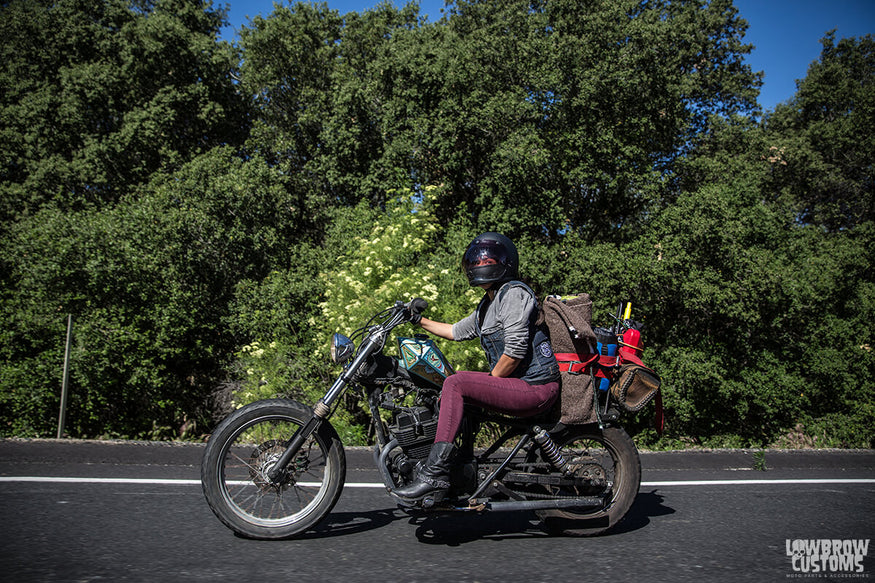 Leila on her Honda Rebel 250 having the best time on her first bike.
Leila on her Honda Rebel 250 having the best time on her first bike.
Motorcycling is one of the most uplifting things I do – it’s the only experience I’ve had that’s exciting and relaxing at the same time. But it won’t be that way for you if you’re worried about what other people think instead of focusing on how to become a proficient motorcyclist. Your first bike is an instructional instrument you’ll use to learn how to ride: it’s not meant to be used to prove anything to anyone.
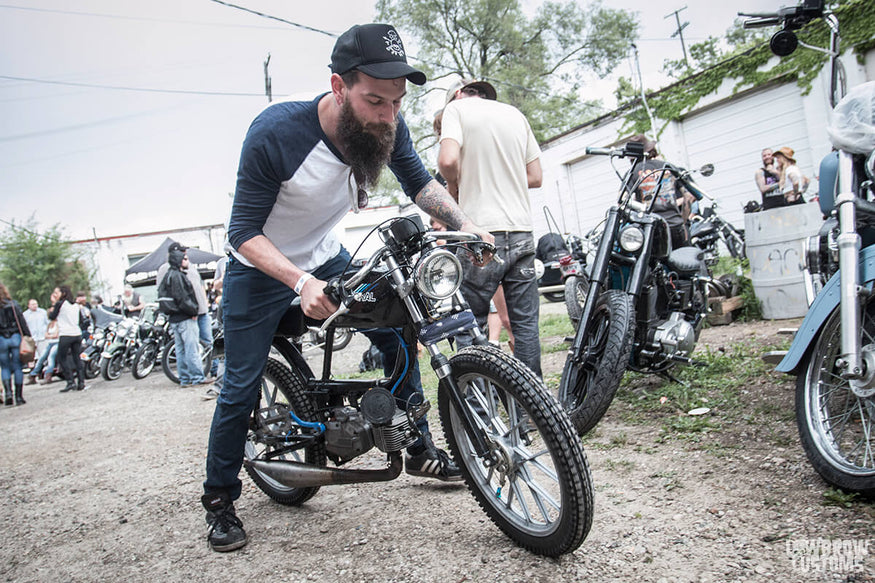 Well size doesn't always matter, but ask yourself what do you want to do with your motorcycle. This two stroke wont take you cross the country but it will get ya bar to bar and be hella fun while doing it.
Well size doesn't always matter, but ask yourself what do you want to do with your motorcycle. This two stroke wont take you cross the country but it will get ya bar to bar and be hella fun while doing it.
2. Think About The Motorcycle’s Horsepower
Next on the list of what to know before buying your first motorcycle is what size engine is “too big” for a newbie rider. In some foreign countries, new riders must start riding on a certain-sized motorcycle (such as 50cc or 100cc) before they can progress to riding bigger-displacement motorcycles. In the United States there are no such regulations (that I’m aware of anyway), but there are some general guidelines you’ll want to consider.
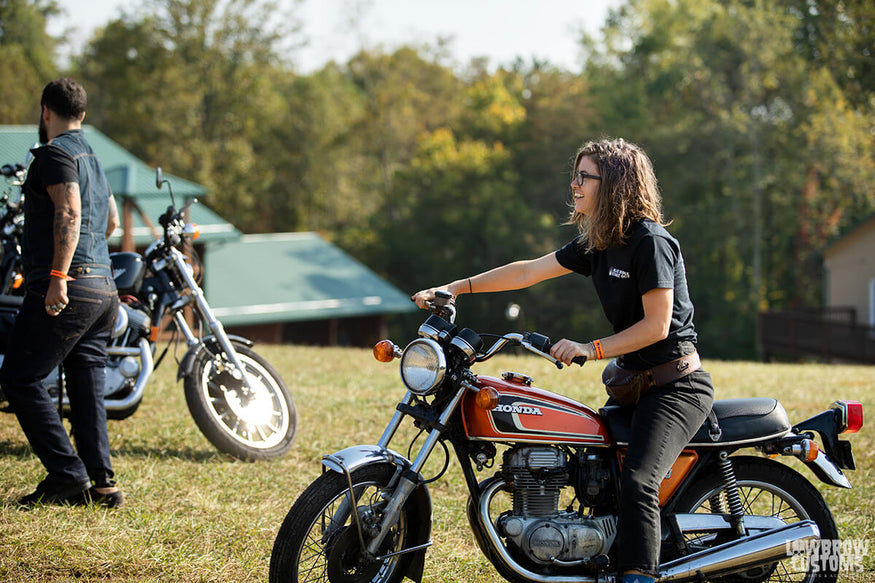 This cb350 has a ton of get up and go! Photo by: Geoff Kowalchuk
This cb350 has a ton of get up and go! Photo by: Geoff Kowalchuk
What makes this issue much more important with motorcycles than cars is traction. If you’re a new driver and get a Dodge Viper for your first car and give it a little too much throttle, the rear end may slide a bit but often little harm will come of it. Try giving a 1,000 cc sport bike or a big V-Twin Harley-Davidson or Indian too much throttle and you could get ejected from the bike or end up in a roadside ditch very quickly.
 A Yamaha xs650 is always a good candidate for a first bike.
A Yamaha xs650 is always a good candidate for a first bike.
You don’t need to find the smallest displacement bike you can for your first bike, but single-cylinder or twin (two-cylinder) motorcycles that are 650cc or less or three-or-more-cylinder models smaller than 600cc are generally a safe bet. Motorcycles with engines within those size ranges will offer enough power to get you moving without having too much on tap that could cause a situation to quickly spiral out of control.
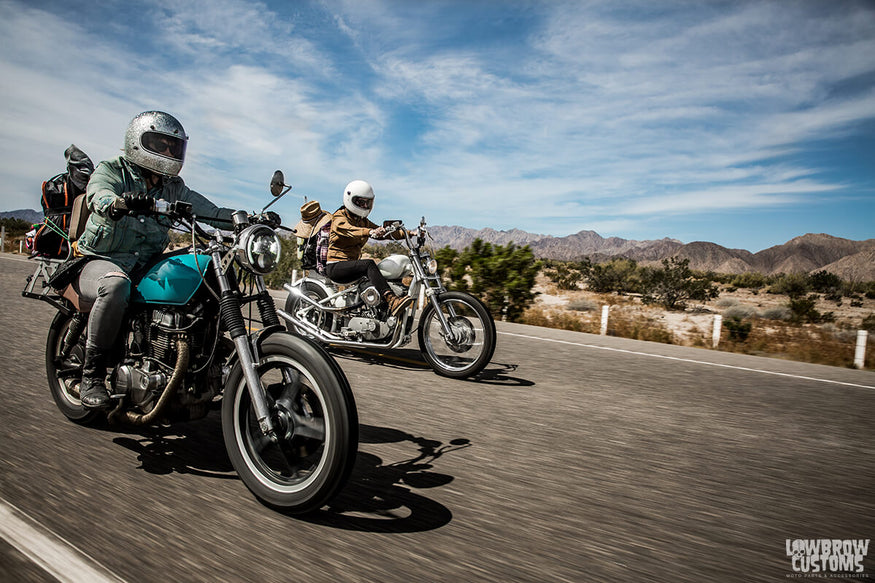 Amity Marr on her Cm400 keeping up with the big twins and Sportsters just fine.
Amity Marr on her Cm400 keeping up with the big twins and Sportsters just fine.
And if you’re worried about needing a big enough bike to keep up with your friends who ride, that shouldn’t be a concern. If your friends are safe, conscientious riders, they’ll slow down and help you develop the skills and confidence to go faster. And if they don’t, ride by yourself until you feel your skills have reached the point where you can comfortably ride their pace.
 Noah is a little short for this bike's height, as you can see he's leaning on one leg to keep the bike up, not ideal for comfort.
Noah is a little short for this bike's height, as you can see he's leaning on one leg to keep the bike up, not ideal for comfort.
3. Look For The Right Fit & Comfort
In addition to engine size, how a motorcycle “fits” you is very important when buying a first motorcycle. Worry less about how you look on the bike and more about how comfortable you feel on it.
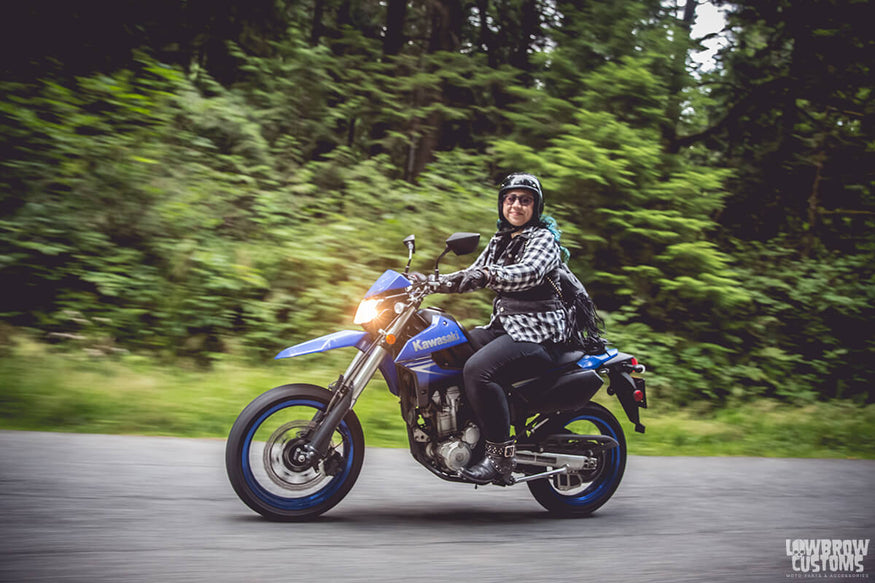 Kat had a small challenge riding on this dual sport in Vancouver. She's 5'4" and had to tippy toe the entire time. For a new rider this is not ideal, luckily for Kat she's had a lot of experience riding a ton of different motorcycles.
Kat had a small challenge riding on this dual sport in Vancouver. She's 5'4" and had to tippy toe the entire time. For a new rider this is not ideal, luckily for Kat she's had a lot of experience riding a ton of different motorcycles.
Some motorcycles – such as true dirt bikes, dual-sport and adventure bikes – have very high seat heights (33 inches or more), and it’s recommended that new riders be able to put both feet flat on the ground. The first time you go to put your foot down at a stoplight or stop sign and your boot slips on wet or oily pavement, this advice will make a lot more sense.
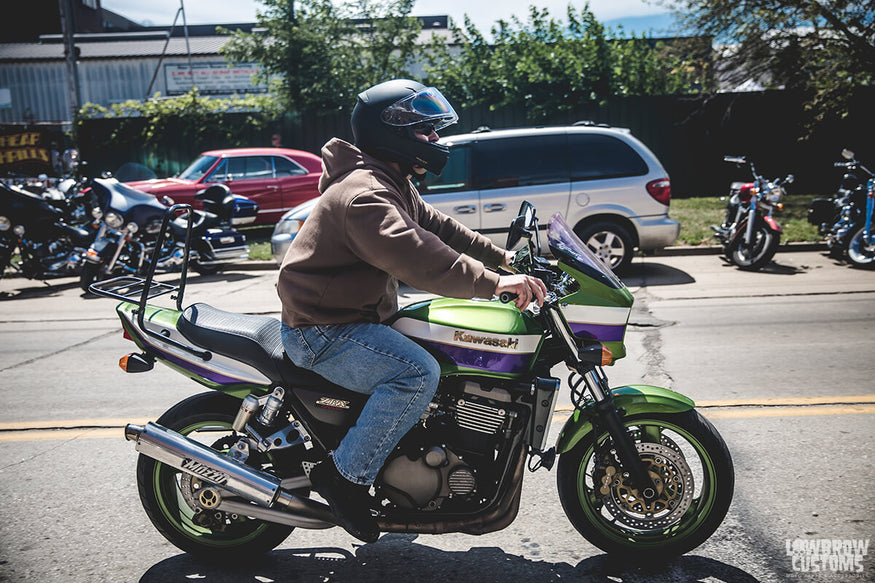 Nothing wrong with a sport bike, but you could find your self uncomfortable in long distance trips. Again what do you want out of your motorcycle.
Nothing wrong with a sport bike, but you could find your self uncomfortable in long distance trips. Again what do you want out of your motorcycle.
Maybe you got into motorcycles by watching MotoGP or MotoAmerica and want a sportbike for your first motorcycle. There’s nothing wrong with that, but if you have a tall, lanky build, you need to actually sit on a potential first bike to make sure you don’t feel too cramped. Sportbikes tend to have the rider in a compact position that can require putting a lot of your upper body weight on your wrists instead of onto the seat.
Having to go and see a potential first motorcycle in person can be one of the most frustrating aspects of looking for your first bike. You love what you see in the online ad and the bike appears to be mechanically sound, only to sit on it and determine it’s not a good fit for you. That’s OK, and with each time you look at a bike you’ll learn a little more about what’s going to fit you best. Just remember – what's slightly uncomfortable for a few minutes can become unbearable after just a couple hours of riding.
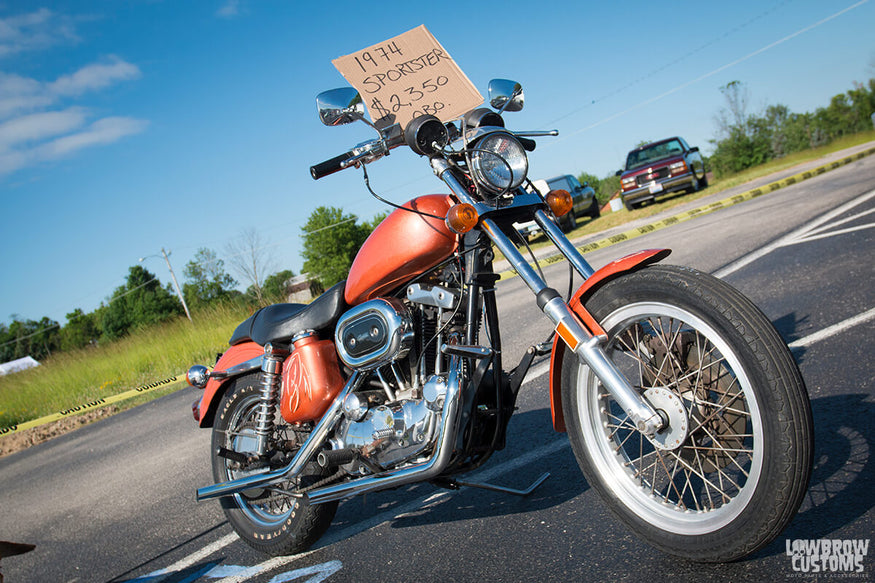 Just cause the price is good doesn't mean the bike is.
Just cause the price is good doesn't mean the bike is.
4. Budget Wisely by Bringing A Friend
Buying your first motorcycle can be a significant financial decision, and it’s best to bring a second set of eyes with you when you go to look at a first bike. When you decide a motorcycle is worth seeing in person, you’re already sold on it to some degree. Seeing all the things you like about that bike can cause you to miss potential issues that could cost you big money down the road. It’s best to bring someone along who doesn’t have a financial stake in the bike and may spot things – for the better or worse – that you may miss.
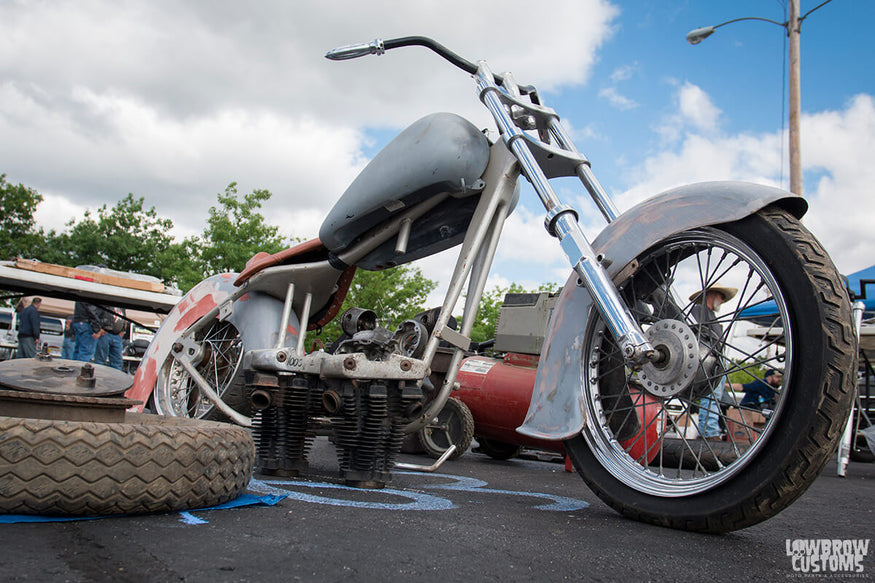 Probably not worth investing in this kind of project as a first bike if you don't have the mechanical skills to get her going. You want to learn to ride not wait another couple years while you figure out how to put this wild project together.
Probably not worth investing in this kind of project as a first bike if you don't have the mechanical skills to get her going. You want to learn to ride not wait another couple years while you figure out how to put this wild project together.
Ideally, this friend has some riding and motorcycle maintenance experience, but any second set of eyes is better than none. It doesn’t take a master mechanic to spot a small oil leak, worn out tires or a loose chain.
5. Weigh Your Options Of New vs. Used
There’s no need to require perfection when buying your first motorcycle. Some new riders opt to only buy a new bike to avoid any potential issues – or at least have a warranty for the first year or so to help mitigate any problems. There’s nothing wrong with approach – aside from many new riders not being able to afford a brand-new bike.
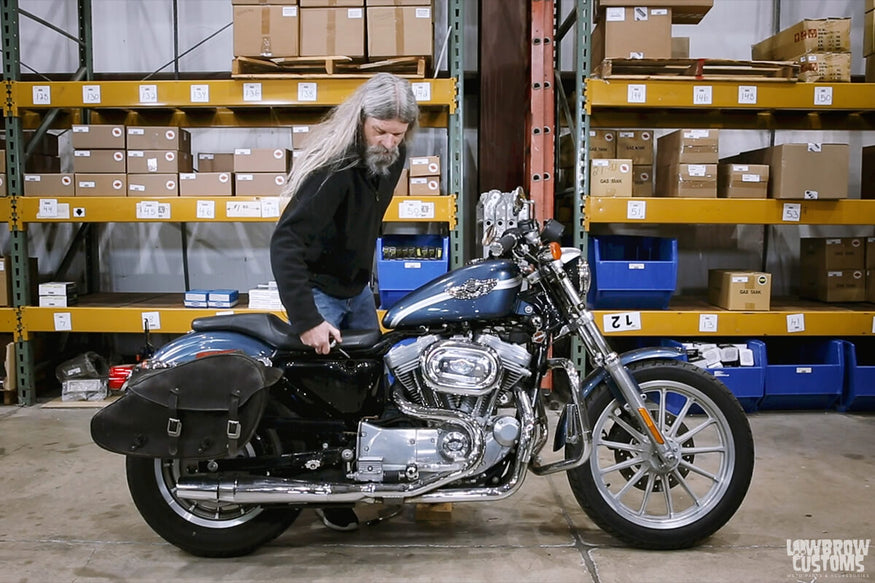 Todd showing what to look at on the Saturday Sportster when buying your first bike.
Todd showing what to look at on the Saturday Sportster when buying your first bike.
For those who decide to look at used motorcycles for their first bike don’t let a few small blemishes or worn out wear-and-tear items dissuade you. If the chain is a little loose,the tires or brake pads are worn down, that’s OK. Those are things that must be replaced from time to time, and having to replace them shortly after buying the bike isn’t a big deal. And it will give you a chance to learn more about your bike by having to do those maintenance items early on.
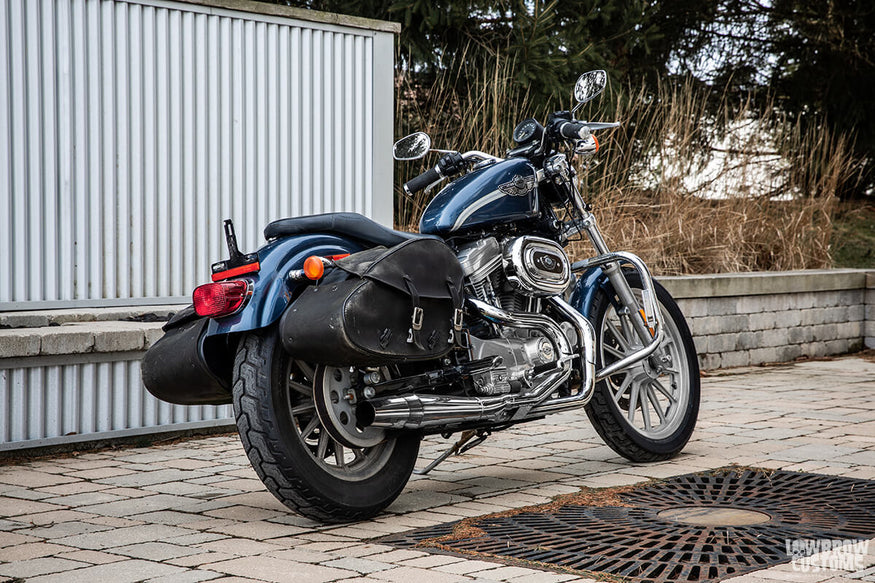 The Saturday Sportster was purchased for $3000 and was rough around the edges, had some dents, some rust, but it had really low miles and a clean engine. A perfect candidate to learn on, drop and then customize down the road.
The Saturday Sportster was purchased for $3000 and was rough around the edges, had some dents, some rust, but it had really low miles and a clean engine. A perfect candidate to learn on, drop and then customize down the road.
If you think the key to finding a good used motorcycle is low mileage, that isn’t a guarantee of a trouble-free first motorcycle experience. Let’s say you’re considering a late 2000s motorcycle that has 5,000 miles on the odometer. For certain maintenance items (which are discussed in the next section), low mileage can be a good thing. But if that little-ridden machine has been sitting for 10 or more years, a bunch of the rubber components – namely tires – are likely to be in need of replacement. The fuel in the tank may be old as well -- which could mean varnish in the tank and fuel delivery components. And the brake fluid could look like Guinness when it’s supposed to look like Crisco.
In addition, if you are interested in buying a used Harley-Davidson motorcycle as your first bike, we also have a detailed guide on Harley-Davidson VIN and what to look for when purchasing a used Harley-Davidson Sportster for you to learn more about it.
6. Asking For Maintenance Records Is A Must
For some maintenance items, mileage is a key factor and it’s important to know what maintenance has been done and when. Chief among these are oil changes and valve lash adjustments. If a bike’s oil hasn’t been changed at specified intervals, everything may feel and sound good on a test ride but the engine and transmission internals could be prone to premature failure. And if the valve clearances haven’t been checked and adjusted at the specified intervals, the engine’s valves could start to burn and you’ll have to have the cylinder head replaced or rebuilt – which is not cheap.
If you’re looking at a potential first bike that’s more than a year or two old, make sure to ask for maintenance records. Some bike owners take their motorcycles to dealers for even the smallest maintenance tasks. In those cases, either the owner will have receipts, or they can get the shop(s) to provide copies of the work orders. For owners who do all their own maintenance (like myself), they should at least have written records of what they did and when, as well as dated receipts for the parts they purchased.
7. Immediate Maintenance On Used Motorcycles
Once you’ve bought your first bike and have gotten it home, the first thing you’ll want to do is some preventative maintenance. Unless the bike is new off the showroom floor, it’s best to change all the fluids including the engine oil, brake fluid, coolant (liquid-cooled bikes only) and transmission and final drive fluid (if applicable). If the motorcycle is chain-driven, give the chain a good cleaning and check the chain tension. You’ll also want to change the oil filter when you do the oil change, as well as get a new air filter.
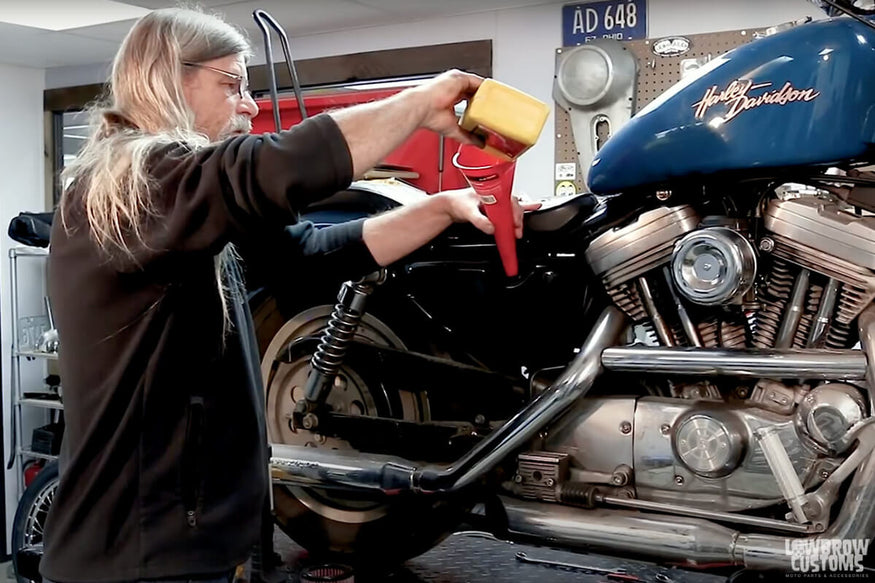
Fresh oil never hurt nobody. Doing an oil change on your new purchase not only will teach you a little more about your bike but also give your new bike a step in the right direction of proper care. Who knows how long the bike has been sitting?
Even if the previous owner said that they changed everything “recently,” that‘s nice. Change them anyway. It’s best to start fresh with simple maintenance items like fluids and filters.
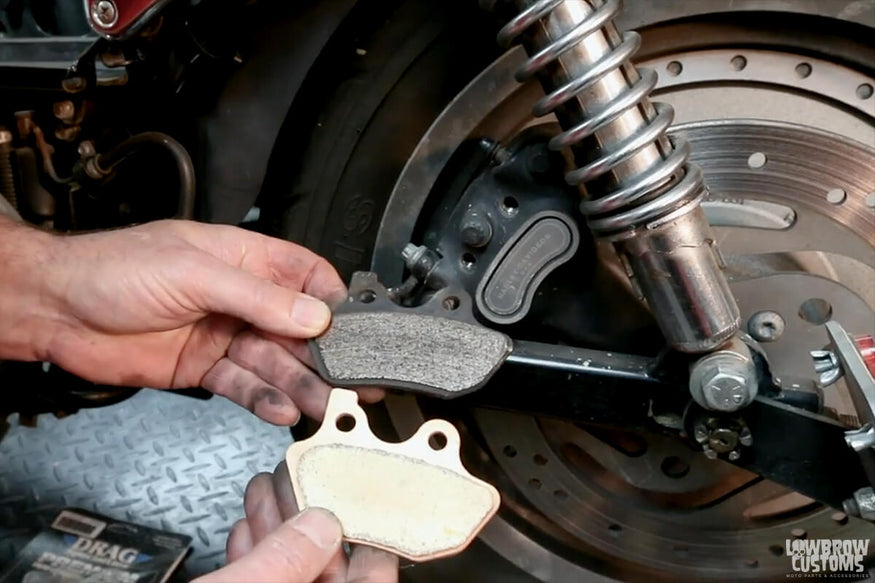 Always a good idea to check the brakes and replace if its an older bike, You can see here a comparison of new and old pads. Old on top, new on the bottom.
Always a good idea to check the brakes and replace if its an older bike, You can see here a comparison of new and old pads. Old on top, new on the bottom.
This also is a good time to start a maintenance log for your new ride – which can be as simple as a spiral-bound notebook you buy at a dollar store. Just be sure to include the date and mileage for each entry. That way, when another newbie rider who’s read these tips for buying a first motorcycle comes to look at your bike, you’ll have improved your chances of making that sale.
8. Get Riding Right Away
Once the initial maintenance is done, it’s time to get riding – a lot. Try to spend as much time in the saddle as you can right after you buy your first motorcycle. Need to run to the post office? Put your package in a backpack and take a ride to your local USPS branch. Heading out to dinner with friends? Ride the bike and give them their first look at you with helmet hair.
 No matter what it is get out there and ride!
No matter what it is get out there and ride!
The more you have to use and develop your riding skillset early on, the better a rider you will become. It’s also important to become familiar with your bike. If you know what the bike is supposed to feel and sound like when it’s running properly, it becomes a lot easier to tell when something is amiss mechanically.
9. Don’t Worry About Outgrowing Your First Bike
Even after reading all these tips on how to buy your first motorcycle, you may choose a bike that doesn’t end up being something you want to keep long-term. You need to be OK with that before you make the purchase. You’re getting into something completely new, and there’s lot more to motorcycling than anyone can fit into one article. You may own your first bike for a few months and realize you’re into a different kind of riding than you thought you’d be.
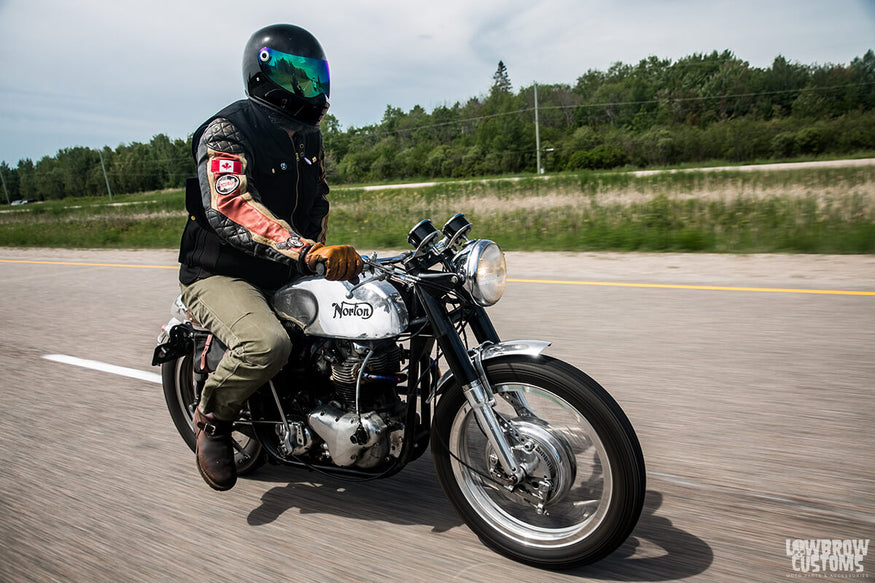 Andy Cox on his Norton, aggressive and crouched stance.
Andy Cox on his Norton, aggressive and crouched stance.
One of the keys when buying a first motorcycle is to make sure it’s something you can get out of quickly if you decide you want a different kind of bike. If you haven’t spent a lot buying the bike and accessories, you usually can sell the bike for close to what you bought it for and use that money to get something else.
 Kyle on his dyna in the middle of our cross country trip.
Kyle on his dyna in the middle of our cross country trip.
When I got into riding, I wanted to be a canyon-carver sportbike rider. Now, most of my riding is long-distance touring. Your riding habits will change with age, experience and possibly if you relocate to a different part of the country or the world. Don’t let a so-so first motorcycle experience dampen your enthusiasm for the sport.
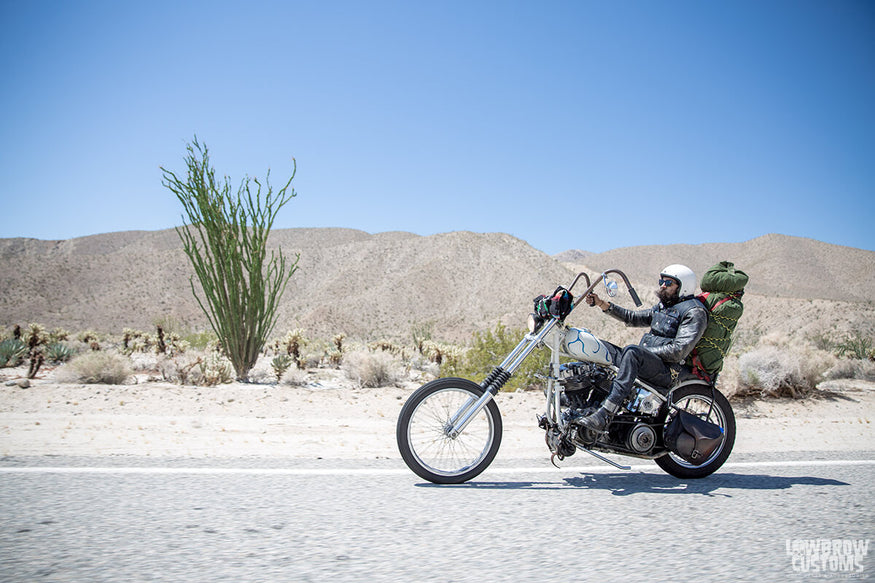 Dirty hands Kev laid back on his shovelhead chop. Everyone has their own style and riding position.
Dirty hands Kev laid back on his shovelhead chop. Everyone has their own style and riding position.
10. Equipped With Gear You Need To Ride Safely
There’s more to buying a first motorcycle than just the machine itself. It’s just as important to get quality gear and rider training before you start looking for your first bike. Any list of what to know before buying a first motorcycle needs to include what options there are for the Motorcycle Safety Foundation Basic Rider Course (or something similar) in your home region. Many such classes allow you to take your motorcycle endorsement test as part of the course, and I can attest to how the instruction I received helped me avoid crashing several times in the first couple years of riding.
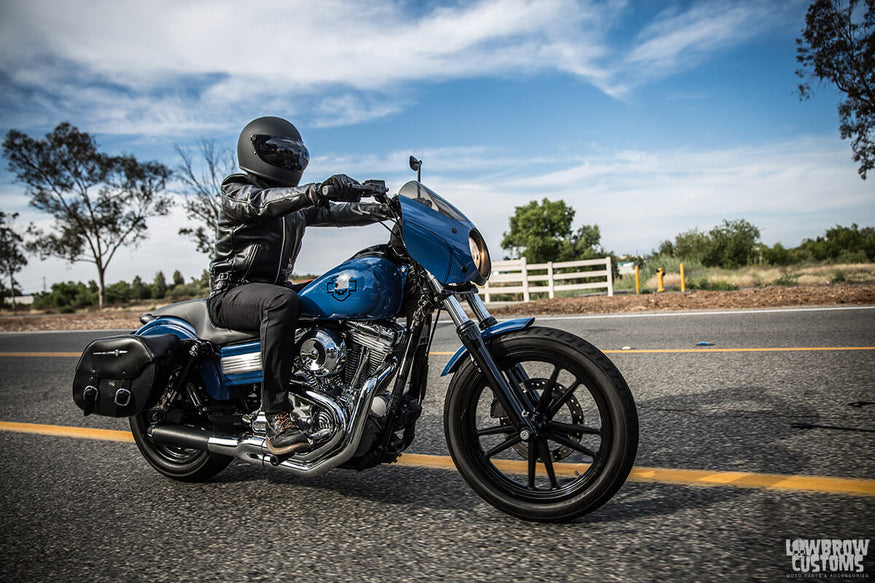 Mike Ellis wearing his gloves, leather jacket, boots and Biltwell Helmet. Even with the temps at 80 plus degrees in California, he still wears his gear to protect himself from the elements and also the possibility of a crash.
Mike Ellis wearing his gloves, leather jacket, boots and Biltwell Helmet. Even with the temps at 80 plus degrees in California, he still wears his gear to protect himself from the elements and also the possibility of a crash.
Having the right motorcycle riding gear is as important – arguably more important – as having the right first bike. You’ll probably own your first riding gear longer than your first motorcycle, and it’s important to make sure you have a properly-fitting motorcycle helmet and eye protection, a motorcycling-specific leather or textile riding jacket and quality pairs of boots and motorcycle riding gloves before you begin looking at potential first motorcycles.
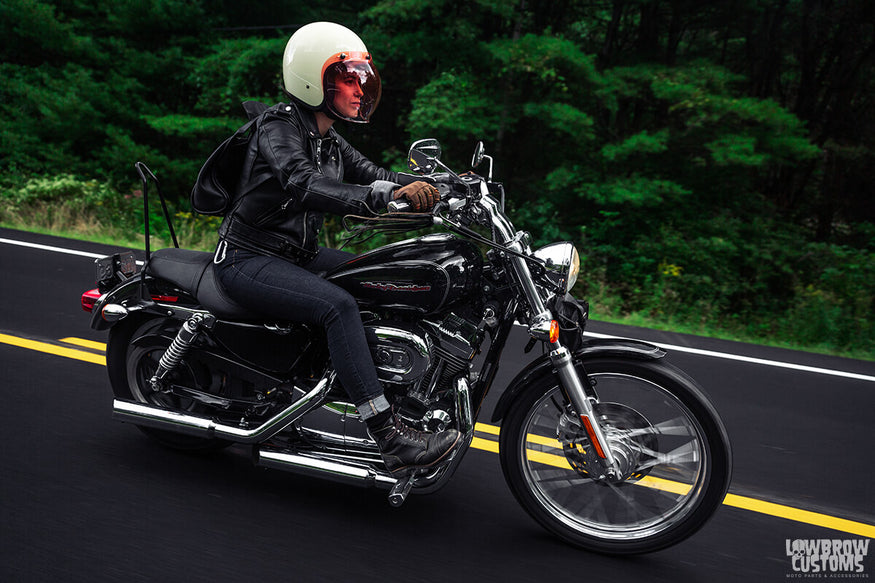 It's a bit colder in the Catskils but still the same gear applies.
It's a bit colder in the Catskils but still the same gear applies.
For some, buying a first motorcycle can seem like a daunting task. For others, figuring out how to buy a first motorcycle gets over-simplified. The above 10 tips for buying a first motorcycle that may help anxious or over-enthusiastic motorcycling newbies feel more confident about shopping for their first bike.
Related Products










